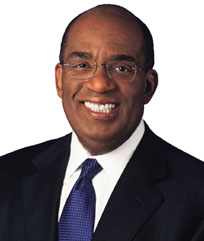How you project yourself in a
media interview, particularly one entailing visuals, contributes heavily to
your success as a spokesperson. The way
you look, dress and move matters. Today, even print interviews are most often photographed
to accompany the story, as well as recorded on video. Television interviews pose more of a
challenge given the lighting conditions and set design. Furthermore, today’s
high-definition broadcast standards are less forgiving on the physical “flaws” that
plague mere mortals.
So what to wear for a media interview?
1. Look
the part
Dress
appropriate to the message, the interview setting and the organization you
represent. When in doubt, dress formally. It is better to be overdressed than underdressed.
2.
Choose colors that suit your skin tone
Skin
tones across the board fall into two classifications: cool or warm. Some colors make Caucasian skin look jaundiced
but look rich and vibrant on dark skin. Whether
you are male or female, take the time to check your best colors. Chances are
these are the ones that dominate your wardrobe, compliment your eye color or just make
you look healthy and confident.
3.
Understand the psychology of color
While
the cut, style, and fit of your clothes are important, the first thing most
people are going to notice is the color.
The color can have a serious psychological impact on the person looking at you,
so depending on how you want to present yourself it's good to know the basic
rules.
Blue:
(royal blue, navy) credibility, trust, loyalty, wisdom.
Yellow:
(canary, sunflower) bright, positive, future-focused.
Red: (tomato,
strawberry) power, love, passion.
Green:
(spearmint, olive) clean, calming, natural.
Purple:
(plum, violet, burgundy) aristocratic, lavish, spiritual.
Orange:
(tangerine, marigold) energetic, vitality, productive.
White:
(off-white, beige) hygiene, simple, clean.
Brown:
(tan, chocolate) warm, serious, official.
Pink: (dusty pink, rose) feminine, soft, approachable.
Gray: (pewter, putty) sophisticated, authoritative.
Make
sure there is contrast among suit, shirt and tie. Same goes for blouses and jackets. Avoid checks, polka dots, chevron and herringbone
patterns. These can get psychedelic and distorted
on camera. Dresses are fine for women;
solid colors are preferred to floral or busy textiles. No animal prints, please. And, unless you have the arms of Michelle
Obama, avoid sleeveless dresses.
 |
| Animal patterns or busy prints are to be avoided, unless you are a Kardashian. |
 |
| Solid gray exudes confidence. Sky blue shows strength and authority, perfect color choices for Jennifer Hudson and Oprah. |
4. Leave
the “bling” at home
Jewelry
can be a distraction, avoid anything that moves when you talk or gesture. Women: avoid pendant, dangling or large hoop
earrings. And, leave the 8-karat diamond ring at home.
There’s
much more to know about wardrobe and color selections. The Exceptional Spokesperson should invest
the time to learn what suits him or her perfectly. If possible, hire a wardrobe stylist to help
you pick out interview outfits that will help you project your personal best.
Myth:
The
color white should be avoided because it tends to glow on camera.
Reality:
With
the advent of digital television and advanced lenses and lighting, the color
white no longer looks radioactive on camera.
It is a color choice that should be used wisely, however, because of its
association with certain professions and industries.
Links to Genius
For
more on color psychology and color theory, visit the definite source of color
as we know it, Pantone, at www.pantone.com








